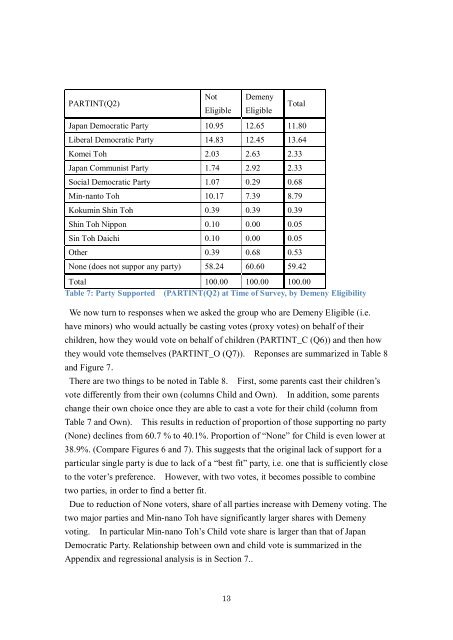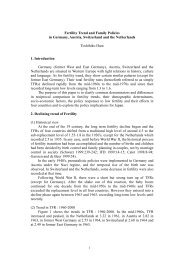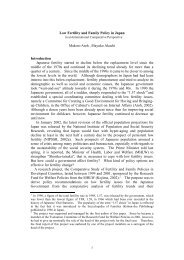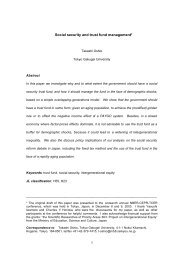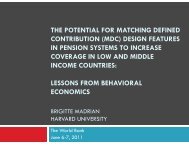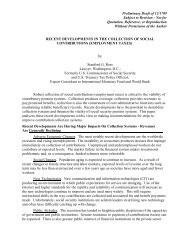Intergenerational Voter Preference Survey - Preliminary Results ...
Intergenerational Voter Preference Survey - Preliminary Results ...
Intergenerational Voter Preference Survey - Preliminary Results ...
You also want an ePaper? Increase the reach of your titles
YUMPU automatically turns print PDFs into web optimized ePapers that Google loves.
PARTINT(Q2)NotEligibleDemenyEligibleTotalJapan Democratic Party 10.95 12.65 11.80Liberal Democratic Party 14.83 12.45 13.64Komei Toh 2.03 2.63 2.33Japan Communist Party 1.74 2.92 2.33Social Democratic Party 1.07 0.29 0.68Min-nanto Toh 10.17 7.39 8.79Kokumin Shin Toh 0.39 0.39 0.39Shin Toh Nippon 0.10 0.00 0.05Sin Toh Daichi 0.10 0.00 0.05Other 0.39 0.68 0.53None (does not suppor any party) 58.24 60.60 59.42Total 100.00 100.00 100.00Table 7: Party Supported (PARTINT(Q2) at Time of <strong>Survey</strong>, by Demeny EligibilityWe now turn to responses when we asked the group who are Demeny Eligible (i.e.have minors) who would actually be casting votes (proxy votes) on behalf of theirchildren, how they would vote on behalf of children (PARTINT_C (Q6)) and then howthey would vote themselves (PARTINT_O (Q7)). Reponses are summarized in Table 8and Figure 7.There are two things to be noted in Table 8. First, some parents cast their children’svote differently from their own (columns Child and Own). In addition, some parentschange their own choice once they are able to cast a vote for their child (column fromTable 7 and Own). This results in reduction of proportion of those supporting no party(None) declines from 60.7 % to 40.1%. Proportion of “None” for Child is even lower at38.9%. (Compare Figures 6 and 7). This suggests that the original lack of support for aparticular single party is due to lack of a “best fit” party, i.e. one that is sufficiently closeto the voter’s preference. However, with two votes, it becomes possible to combinetwo parties, in order to find a better fit.Due to reduction of None voters, share of all parties increase with Demeny voting. Thetwo major parties and Min-nano Toh have significantly larger shares with Demenyvoting. In particular Min-nano Toh’s Child vote share is larger than that of JapanDemocratic Party. Relationship between own and child vote is summarized in theAppendix and regressional analysis is in Section 7..13


